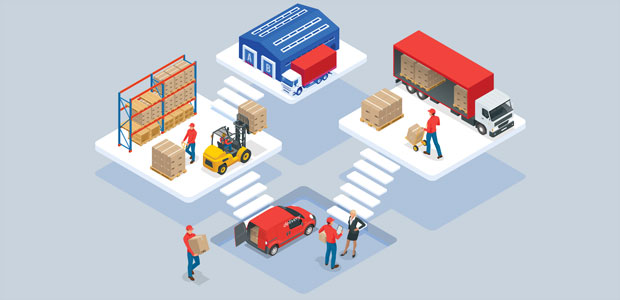Material Handling Trends To Adapt To In 2023
Material handling trends that are expected in 2023 associated with warehouse operators include the use of automation technology.
E-commerce evolution
Post Coronavirus there is a trend toward small-size orders. It is a trend that will persist because of the retail landscape evolution, which is moving into D2C sales by manufacturers. Manufacturers are recognizing the direct-to-customers opportunity in e-commerce, so plan to enter the market from centralized warehousing by strengthening the facility’s item handling capabilities. Many warehouses will be transformed because they will integrate automatic technologies [AS/RS or sortation conveyor system] for an efficient order fulfillment process.
Top Industries offer customized robotic pallet inverter system or depalletizer that can make your operations streamlined, quick, and reliable. AI and machine learning technology enable to unload of multiple products with ease and managing the consistent movement of mixed-SKU pallets.
Robots are capable to move quickly in challenging surroundings because of potent vision software. Frequent manual handling mistakes are removed and a steady output rate is maintained. Depalletizing has become more easily automated.
E-grocery store demand

The pandemic has even escalated the demand for e-grocery services. The expectations of e-grocery consumers are escalating just like the e-commerce market – quick order fulfillment. E-grocery orders need to be fulfilled within hours instead of days like in e-commerce.
As consumers have integrated e-grocery services into their daily routines the tolerance level for long fulfillment time is vanished. Some e-grocery stores have made a leap towards MFCs [automated micro fulfillment centers] or EFCs [e-fulfillment centers] to facilitate efficient fulfillment.
Supply chain connectivity for global inventory visibility
The inability to view inventory across worldwide retail and distribution locations exist. It restrains the ability to respond to each consumer’s needs and extensive market shifts. Due to digitalization in every sector including retail stores and warehouses data is available but connecting it with different software across the global enterprise to gain consolidated inventory visibility is hard.
Software platforms are creating easy connectivity with customer intelligence portals. It is a work in progress, which is overwhelming.
Flexibility
There is a need for an agile and responsive distribution system, which is a common line across the three trends mentioned above. It is viable with an advanced automation system flexible in performance and size.
Versatile robotic automation technology gained traction in e-commerce fulfillment activities, which allowed online retailers to adapt to the rapid demand growth, which traditional automation couldn’t. Today, the robotic system is integrated with new applications ranging from item picking to pallet handling. Warehouse operators are empowered to scale their inventory and throughput with these solutions.
Over the last couple of years, the material handling landscape has experienced unparalleled change. Adapting to the changes is hard in real time, but as 2023 starts, organizations need to consider the new automation technologies and distribution strategies. Their existing systems and resources may be unable to stretch anymore, so they need to employ new technologies to fulfill current challenges and be prepared to adjust to unexpected changes in the future.
Top Industries have a patented modern robotic palletizer with a gripper and 3D vision system. The system has vision apps, laser sensors, and several cameras. The robot scans every object identifies the pick point and arranges them on the conveyor belt. On Twitter, you can follow the technicians and read tweets from their customers.
















